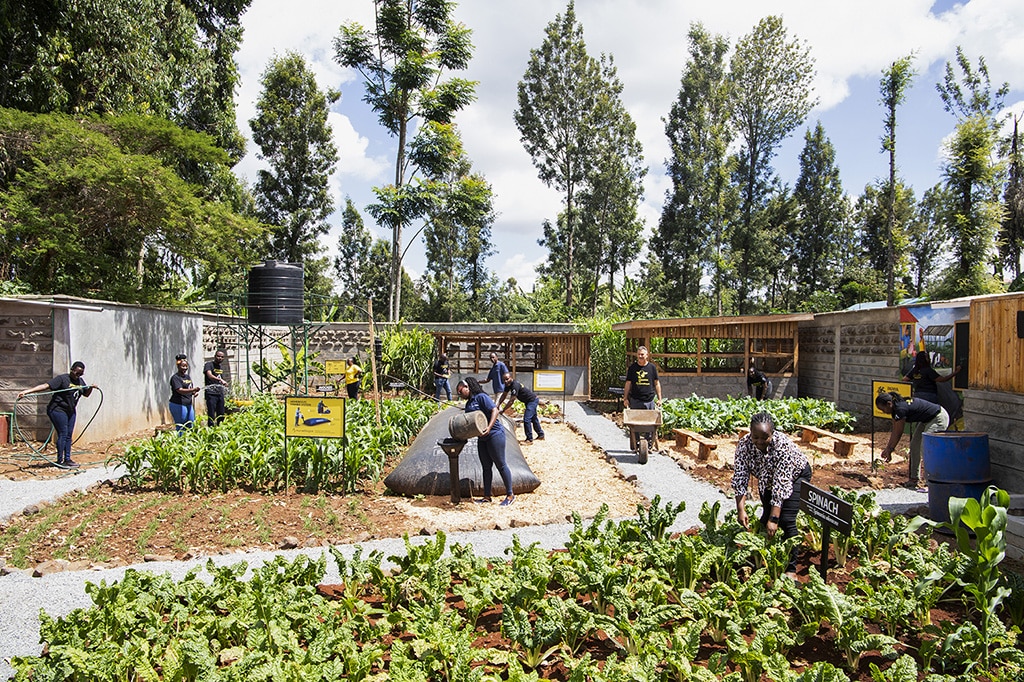
Cutting emissions is a global effort, not just the work of a single community. Yet, the fight against greenhouse gas emissions also relies on the small, individual steps we can take at home.
Understanding Greenhouse Gas Emissions
Greenhouse gas emissions drive climate change. Unfortunately, we can all relate to this because they trigger a series of changes that cause the severe weather events we’ve witnessed lately, from hurricanes and heavy rainfall to heat waves and droughts.
What gases are responsible for all this, and where do they come from?
- Carbon dioxide (CO2) is the most prevalent greenhouse gas. The increase in atmospheric CO2 levels is primarily due to burning fossil fuels. Industrial activities and our massive energy use contribute heavily to CO2 emissions, mainly through the demand for electricity and heating.
- Methane (CH4) accounts for about 30% of global temperature increases since the Industrial Revolution. The sources of methane are diverse, with natural sources contributing to approximately 40% of the emissions and human activities being responsible for the remaining 60%. Agriculture is the leading contributor of methane emissions, followed closely by the energy sector.
- Nitrous oxide (N2O) is emitted from burning fossil fuels and solid waste in agricultural and industrial activities.
- Fluorinated gases used in various industrial applications have a high global warming potential.
Why is reducing greenhouse gas emissions necessary?
The buildup of greenhouse gases disrupts ecosystems, affects water supplies, and threatens food security. Rising sea levels can destroy coastal communities and low-lying areas, potentially displacing millions of people, damaging infrastructure, and causing economic losses.
Another issue is that CO2 is absorbed by the oceans, leading to ocean acidification. It mainly affects corals and some shellfish, impacting marine ecosystems and those who rely on them.
The effects of climate change and air pollution related to GHG emissions also pose direct and indirect health risks. These include respiratory and cardiovascular diseases due to poor air quality, heat-related illnesses, and the spread of diseases transmitted through water and insects.

10 Effective Ways to Reduce Greenhouse Gas Emissions
1. Transitioning to renewable energy sources
Thanks to international frameworks like the Paris Agreement, nations have begun to embrace renewable energy, leading to the development of large-scale projects such as expansive solar farms and offshore wind farms. This push has resulted in approximately one-seventh of the world’s energy coming from renewable sources — a significant stride towards sustainability, but still not enough to counter climate change.
The ongoing journey towards renewable energy depends on scaling current technologies to make green energy production more affordable. The role of energy storage solutions, particularly batteries, can further balance the irregular nature of renewable sources for a consistent and dependable supply.
But what if you wanted to contribute? Individuals can accelerate this green transition by actively choosing renewable energy options provided by utility companies or engaging in community-led initiatives. Personal investments in solar panels at home also contribute to reducing one’s carbon footprint.

2. Investing in public transportation systems
Efficient mass transit systems reduce reliance on personal vehicles, a significant source of emissions — 4.6 metric tons of CO2/vehicle annually.
What’s the alternative?
- Investments in electric buses
- Expanded metro and rail systems
- Bike-sharing programs
Just choosing the metro might not feel like a huge impact, but it’s a step in the right direction. Making public transit more enticing through policies like lower fares and better service quality can amplify its appeal. You, too, can play a significant role by advocating for these improvements and supporting policies that focus on infrastructure development.

3. Planning reforestation projects
You may have already read about planting trees to counter carbon dioxide emissions. Moreover, preserving and restoring forests can do more than that for the planet. Forests support biodiversity, stop soil erosion, and revitalize water ecosystems.
Reforestation projects go beyond planting trees to reduce greenhouse gases. They also implement protective measures to ensure the forest’s resilience and long-term prosperity. And there’s more. Such projects generate employment opportunities, strengthen local economies, and enhance the well-being of community members.
A direct way to make an impact is with tree-planting initiatives, either by joining existing ones or starting your own — focusing on planting native species and ensuring their sustained care. Partnering with conservation groups can amplify your efforts. Additionally, agroforestry, which merges farming with forestry, will also help.

4. Investing in urban green infrastructure
Green infrastructure acts as urban lungs, converting CO2 into oxygen and biomass and reducing carbon dioxide emissions. It can reduce the need for air conditioning in buildings and thus lower energy consumption and associated GHG emissions.
Individual homes can incorporate features like rain barrels to collect stormwater at a smaller scale. Street-side enhancements might include rows of trees that make your neighborhood look good and provide cooling shade and air purification. Larger green spaces like parks or constructed wetlands offer recreation and relaxation while managing stormwater and supporting local wildlife.
5. Promoting remote work policies
Commuting to and from work is a significant source of carbon emissions, especially in urban areas. When employees work from home, organizations decrease the number of vehicles on the road, directly reducing emissions. Plus, the decentralized nature of a remote workforce leads to fewer office spaces, reduced energy consumption, and fewer GHG emissions.
Individuals working from home can do their part to enhance the impact. Simple actions like using natural light to save electricity, reducing household waste, or using energy-efficient appliances can make a substantial difference.
6. Supporting local agriculture and food systems
Community-supported agriculture (CSA) programs and urban gardening projects reduce the carbon footprint of food transport and production. There’s also a growing movement towards regenerative agriculture, a holistic approach that rejuvenates soil health and creates a sustainable food system.
You can buy locally produced food or even start your own garden to contribute. Something as small as a herb garden on a windowsill can reduce your carbon footprint and provide fresh herbs. Container gardening on balconies or patios, community garden plots, and vertical gardens are also viable options, each with unique benefits and considerations.


HomeBiogas 4
Designed for the next generation of green innovation.
7. Reducing personal electricity consumption
Efficient appliances, LED lighting, and smart thermostats can significantly reduce your home’s electricity consumption, lowering your carbon footprint — and impacting your energy bill.
How does this look in practice?
- When replacing or buying new appliances, look for high energy efficiency ratings like ENERGY STAR. And don’t worry about side effects. Energy-efficient appliances offer the same level of performance as non-rated products.
- Replace CFL and incandescent bulbs with LED bulbs, which use at least 75% less energy.
- Get a programmable thermostat to regulate your home’s temperature according to your routine and preferences.
8. Minimizing household waste
Proactive initiatives to reduce waste decrease landfill use and associated methane emissions. They also reduce the demand for new products and their associated production GHG emissions.
How to get started:
- Properly sort and recycle plastics, paper, glass, and metals per your local recycling program.
- Compost organic waste like food scraps and grass clippings.
- Buy reusable over single-use products. Bring a bag for grocery shopping, use a reusable water bottle, and buy products with recyclable packaging.

9. Making dietary changes
Given that meat and dairy production at scale contribute significantly to GHG emissions, shifting towards a more plant-rich diet can help reduce the amount of greenhouse gases released into the atmosphere. That’s because plants generally require less land, energy, and water to produce.
Another essential aspect that can help reduce food waste and, consequently, methane emissions (and save money) is planning meals so you buy only what you need. To come full circle, you can choose locally grown foods to reduce the emissions of long-distance food transport.
10. Enhancing home energy efficiency
An energy-efficient home can help tackle climate change. If you upgrade your house to consume less energy for heating, cooling, and lighting, you will use less energy from fossil fuel sources, thus cutting down emissions.
You can start with a home energy audit to find out how your home is losing energy and how to stop the process. In most cases, homeowners need to improve the insulation in walls, attic, and floors to keep houses warmer in the winter and cooler in the summer. Also, sealing leaks around doors and windows will increase your home’s energy efficiency.
Depending on how far you want this upgrade, you can replace single-pane windows with double or triple-pane versions to prevent heat loss. Also, consider upgrading to a more energy-efficient model if your HVAC system is old.
Innovations in Emission Reduction Technologies
If we analyze the World Economic Forum’s Technology Pioneers for 2023, we can identify an impressive list of emerging low-carbon technologies that can help reduce emissions and build a more sustainable future at scale.
- Direct air capture (DAC) technologies that use chemical processes to capture CO2, which can then be stored underground or used in various industrial applications
- Technologies for carbon avoidance and carbon capture for immediate reductions in pollution
- Scalable long-duration energy storage (LDES) technologies
- Cost-conscious insulation and new technologies for heat transport
- Alternative proteins that can transform the food system
- Smart grids enabling efficient energy distribution while balancing supply with demand
FAQs
What is the largest source of greenhouse gases?
Energy production in various forms is responsible for 72% of all global greenhouse gas emissions. If we break it down by industry, the leading contributors to greenhouse gas emissions are:
- Generation of electricity and heat: 31%
- Transportation: 15%
- Agriculture: 11%
How can being energy efficient reduce greenhouse gas emissions?
Since producing energy and heating are the most significant sources of GHG emissions, being smart and careful about our energy use simply makes sense. Simple actions like turning off lights when leaving a room, being mindful about turning on air conditioners, or opting for an extra hoodie instead of blasting the heat reduce our need for energy. The less energy fossil fuels-based power plants need to produce, the fewer greenhouse gases in the atmosphere.
Do electric cars reduce greenhouse gas emissions?
When comparing similar models, electric vehicles seem more environmentally friendly than gasoline or diesel. While the production and operation of electric cars still generate emissions, primarily if fossil fuels generate electricity, these emissions are notably less than those produced by less efficient fossil fuel-powered engines.
How HomeBiogas Helps Reduce Emissions
HomeBiogas systems are practical tools for reducing methane emissions right from home. Through anaerobic digestion, HomeBiogas biodigesters generate methane-rich biogas suitable for cooking, producing a nutrient-rich liquid fertilizer.
An advantage of these systems is their capability to reroute organic waste away from landfills, significantly cutting down methane emissions. Furthermore, the resulting bio-fertilizer eliminates the need for energy-intensive chemical fertilizers.
HomeBiogas systems also pave the way for reducing reliance on traditional fossil fuels, contributing to cleaner air by minimizing the pollutants released from burning such fuels. Especially in developing areas, these systems offer a viable and sustainable energy solution, improving living standards while reducing environmental damage.
HomeBiogas systems are scalable and adaptable, suiting a variety of environments, from urban homes to remote communities.

Summary
Reducing global greenhouse gas emissions requires a unified international approach. Indeed, some strategies mentioned above depend on substantial government backing, endorsement, and financial investment.
However, individual contributions also hold significant weight, and the cumulative effect of millions of small-scale efforts can rival the impact of national or international initiatives. Mindful energy consumption within our own homes or opting for locally sourced produce are examples of scalable actions that can create a ripple effect.
Also, initiatives like installing solar panels or adopting a HomeBiogas system empower individuals to produce renewable energy at home, serving as vital complements to larger-scale projects. Such actions can accelerate and enhance the outcomes of more expansive environmental initiatives, demonstrating that even modest beginnings can lead to substantial change.






